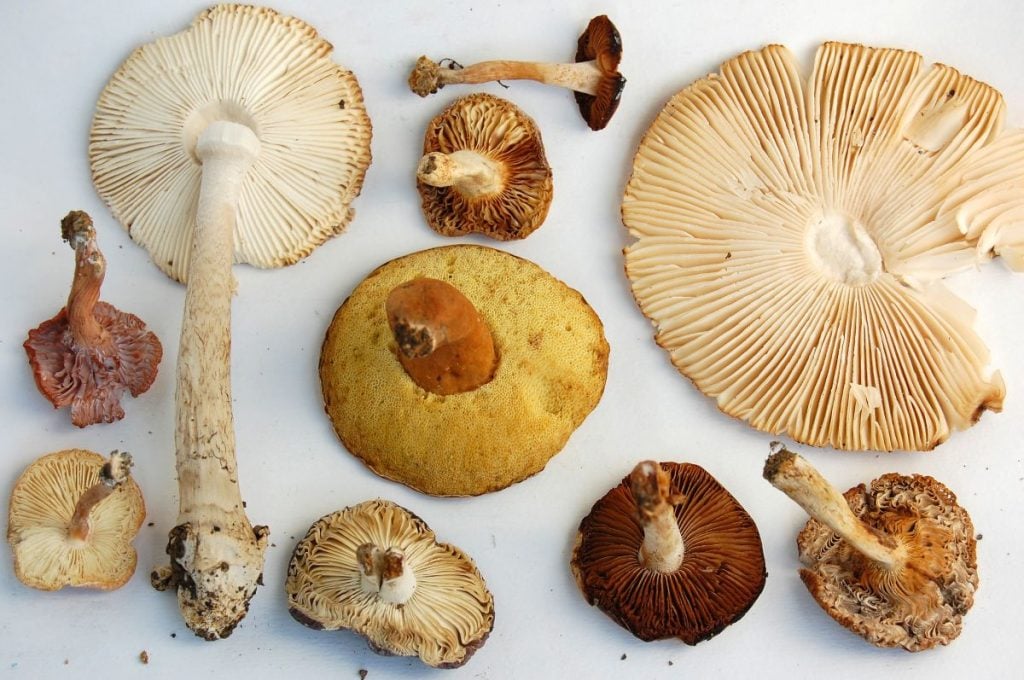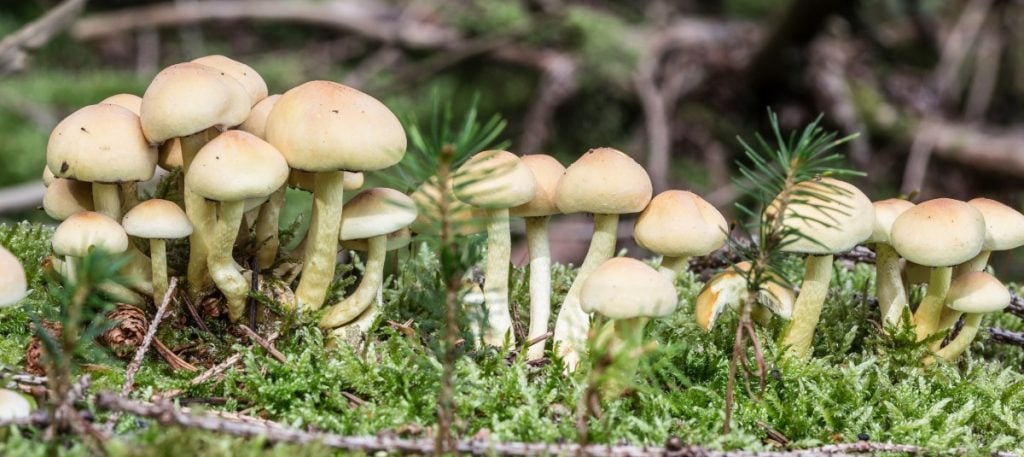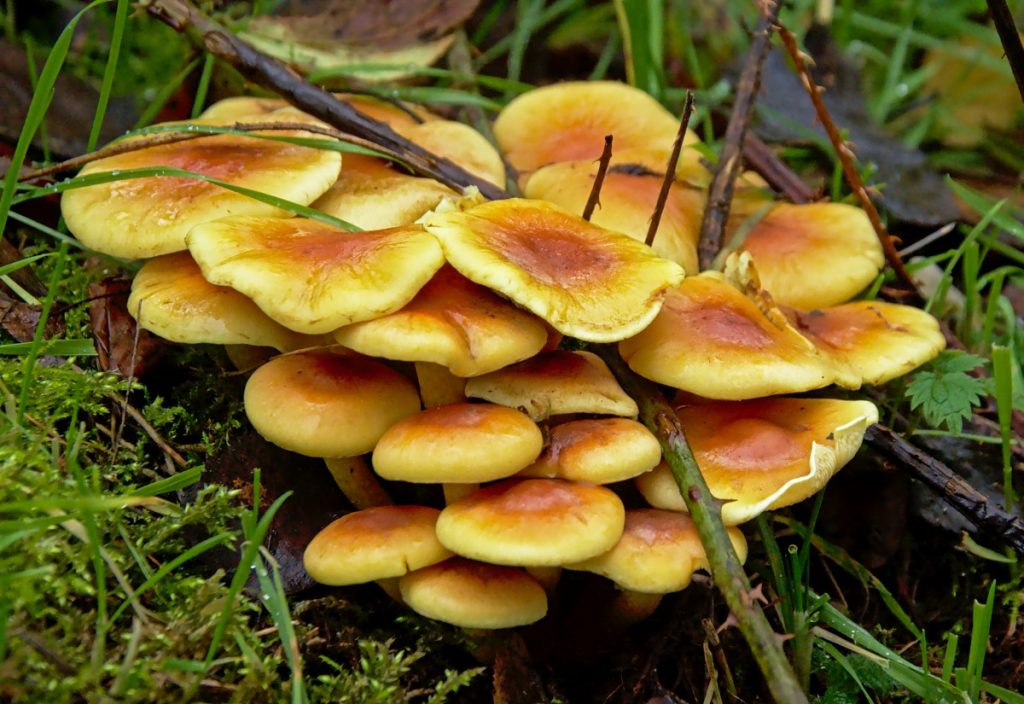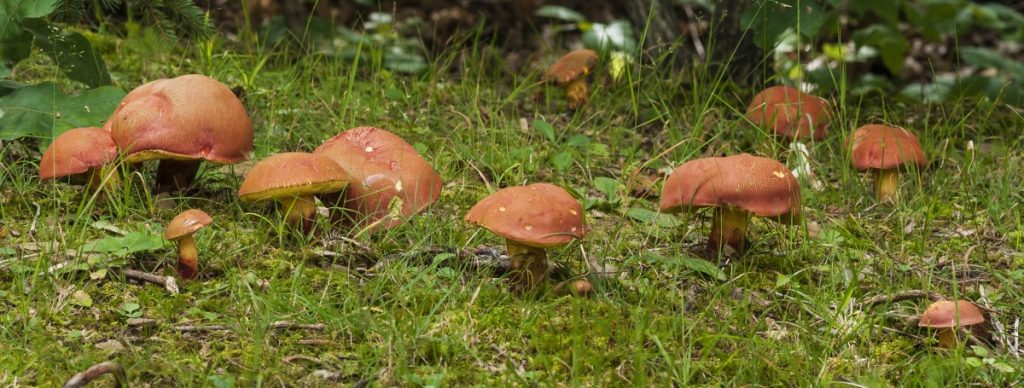Mushrooms are some of the most prolific organisms on the planet. They’re able to spawn billions, even trillions of spores each day.
But each of those spores needs the perfect conditions to grow — the right moisture, temperature, food, and light.
If their chances at survival are slim — so slim that it’s just one in a billion — then how do mushrooms reproduce?
If you’re a cook or gardener trying to grow them for eating, or an entrepreneur farming them for profit, you’ll need to know how these amazing organisms live.

Getting to Know Your Fungi
Mushrooms are the fleshy fruits of fungi that grow on soil, rotting wood, or any suitable surface where they find nourishment
The edible ones are the Basidiomycota and Ascomycota — types of fungi that have a stem, a cap, and gills underneath that cap.
The gills produce microscopic spores that fall off, disperse, and are capable of growing and becoming new mushrooms.
Fungi are neither plants nor animals. They belong to a kingdom of their own which includes molds, yeasts, rusts, mildews, and smuts. Researchers estimate that over 140,000 species of wild mushrooms thrive around the world, and about 3,000 of them are edible.

How Do Mushrooms Reproduce?
Like most plants, mushrooms reproduce in two ways: sexually and asexually, depending on their species.
Scientists call fungi that reproduce only sexually teleomorphs. They label those that reproduce only asexually anamorphs — also called imperfect fungi.
Then there are also perfect fungi that can do both — biologists call them holomorphs.
Actually, about a third of fungal species are known to use more than one method of reproduction.
In sexual reproduction, a fungal cell called hypha (often called mycelium) fuses with another hypha to form a new mushroom.
In asexual reproduction, it replicates itself in one of three ways:
- Through budding, or forming an entirely new part of its body, which breaks off and takes root on its own.
This is also known as the vegetative method, used in growing mushroom crops in household basements, sheds, and small farms. - Through fragmentation, or breaking off a piece of itself — or splitting into different fragments — that then grow and become new mushrooms; and
- Through the production of tiny baby cells, or spores.
Are There Male and Female Mushrooms?
There are male mating types or gametes known as antheridia, and female gametes known as gametangia.
Fungi actually have a far greater number of known sexes. For example, the schizophyllum commune has over 20,000 sex structures within its own species.
Mushrooms also have gametes identified as positive or negative, and each type needs to find the opposite so they can reproduce.
Why Is There Both Sexual and Asexual Reproduction?
There is both sexual and asexual reproduction because different situations call for it.
Fungi are diverse and very complex organisms. While almost all species can reproduce sexually, many reproduce asexually most of the time.
Each reproductive method has its own advantages and disadvantages. The different species use each method to propagate themselves depending on their environment.
The advantage of sexual reproduction is that two adults with different but compatible types can come together.
They produce offspring that inherit a blend of traits, making them look different from one another and from their parents.
These genetic differences make them more adaptive to new environments and give them a higher chance of survival.
The downside, though, is that it takes time and energy for an adult hypha to find a compatible mate.
But in asexual reproduction, the process is faster. It needs only one adult.
A single hypha can produce offspring in the form of biologically identical spores.
The adult produces them quickly and in very large quantities so that more of them have a chance to survive.
The disadvantage of asexual reproduction is that it doesn’t allow for variations. The parent manages to produce only clones of itself, barring a few mutations.
Its offspring are adapted only to specific environments, making them resistant to change and prone to diseases.

How Often Do Mushrooms Reproduce?
In many fungi, sexual reproduction occurs when the environment becomes less favorable — usually at the end of the growing season.
Mushrooms use this time to multiply because the genetic variations produced in their offspring will lead to a higher chance of survival.
But asexual reproduction is more frequent. It happens when the basidium, a small club-shaped structure in the mushroom cap, matures and bears spores in the gills.
A mid-sized mushroom can release up to 20 billion spores over 4-6 days at a rate of 100 million spores per hour.
If you’re a mushroom grower, you can tweak this reproductive process to improve your stock and get better yields.
You can do this by carefully managing your growing conditions, selecting your strains, doing tissue culture, and experimenting with genetic hybridization.

What Is the Life Cycle of a Mushroom?
To better appreciate the lives of fungi, let’s take a quick look at their life cycle.
Step 1:
It starts with a single spore, which germinates in a cool and moist environment where food is available.
That environment is usually in damp soil, rotting wood, or any suitable substrate.
Step 2:
The spore produces thread-like filaments called hyphae which grow by adding new cells to their tips.
Step3:
One hypha goes about looking for an opposite mating type or gamete. When it finds one, it fuses with it in a process called plasmogamy.
Step 4:
The fused hyphae form a mycelium whose cells have two nuclei, one from each gamete.
The mycelium grows, branching out in all directions to form an elaborate network of mycelia under the soil. Mycelia are masses of hyphae, sometimes also called Shiro.
Step 5:
Environmental triggers such as rain, temperature, and seasonal changes cause rapid growth in mycelium.
It swells and fruits, emerging on the surface of the ground. This fruit is the primordium, which is the mushroom that we all know.
It has a volva (the sac-like layer at the base of the stalk), a stalk or stipe, a ring, gills, and a cap (or pileus).
Step 6:
Spores are then formed when two nuclei fuse in the cells lining the gills, a process called karyogamy.
Step 7:
Each cell swells to form a basidium, which is the reproductive organ of a fungus.
Step 8:
The basidium undergoes cell division or meiosis, producing spores that are later dropped from the cap and then get dispersed.
This eight-step process takes only a few days to complete.
Especially in the wild, mushrooms grow very quickly. Some species can grow from spore to adult in a matter of hours.
But most medium-sized and large species take three to four days to grow to their entire breadth.
Why Are Spores so Important?
Spores are critical to growing mushrooms in cultivation. Much like pollen or seeds, they allow fungi to expand their reach and colonize new areas.
They’re dispersed by the wind, rain, flood, insects, birds, animals, and even by people — on our clothes.
Spores stay dormant until they find suitable places to settle and germinate. Given the right conditions, they’ll thrive and develop hyphae.
These then mature and later produce countless more spores.
If a common field mushroom produced 1 billion spores a day, and each of those survived and thrived, they would spread across 8 miles (13 square kilometers) of full-grown mushrooms.
That’s how copious mushroom spores are!

Final Thoughts
If you plan to grow mushrooms for eating or selling, it helps to know how they reproduce — from the spore all the way to mature, edible fruit.
But you don’t need to be a mycologist or botanist to grow healthy, delicious mushrooms.
One thing you can do now is to understand their life cycle and growing conditions, so you can care for them better, improve your current strains, and get a bountiful harvest when you get started growing.
